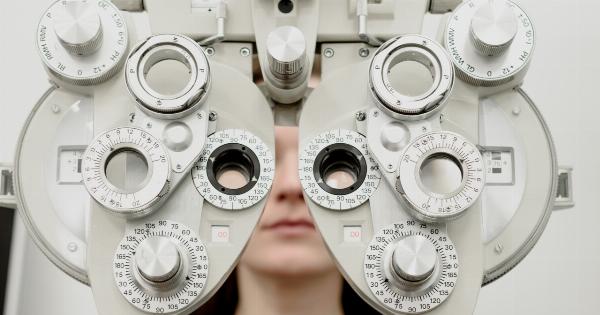Blue dots are small, round spots that appear in our vision, often causing concern and confusion. While many people associate blue dots with lack of sleep or eye strain, there are actually several other causes that have nothing to do with sleep.
In this article, we will explore three such causes and discuss their symptoms, as well as possible treatments.
Migraine Aura
One of the most common causes of blue dots in vision is migraine aura. Migraine aura typically occurs before or during a migraine headache and can manifest as various visual disturbances, including blue dots.
These dots may appear as flickering lights or shimmering dots, and they often expand and move across our visual field.
Migraine aura is believed to be caused by changes in the electrical activity of the brain, which in turn affect the blood vessels and nerves in the visual cortex.
The blue dots in this case are not related to our sleep patterns, but rather serve as a warning sign of an impending migraine attack.
Treatment for migraine aura involves managing the underlying migraine condition. This can include preventive medications, lifestyle changes, and stress management techniques.
It is also important to rest in a quiet, dark room during a migraine attack to minimize sensory stimuli and promote relaxation.
Floaters
Floaters are tiny specks or cobweb-like shapes that drift across our field of vision. They are actually bits of debris in the jelly-like substance called the vitreous, which fills the space inside our eyes.
While floaters are commonly described as transparent or gray, they can sometimes appear as blue dots, especially when they pass in front of a clear, blue sky or a light-colored background.
The presence of blue dot floaters can be alarming, but in most cases, they are harmless and do not require treatment.
However, if you suddenly notice a shower of new floaters, particularly accompanied by flashes of light, it is important to seek immediate medical attention, as this may indicate a retinal detachment, which can lead to permanent vision loss if not treated promptly.
To reduce the appearance of floaters, try moving your eyes up and down, or from side to side. This can sometimes shift the floaters out of your direct line of sight.
Additionally, wearing sunglasses or a wide-brimmed hat when outdoors can help reduce their visibility by blocking some of the incoming light.
Vitreous Detachment
Vitreous detachment occurs when the vitreous gel inside our eyes starts to shrink and pull away from the retina, the light-sensitive layer at the back of the eye.
This natural aging process can cause the appearance of floaters, as well as flashes of light and, in some cases, blue dots in our vision.
The blue dots associated with vitreous detachment are not related to sleep or any external factors, but rather a result of the way light interacts with the vitreous gel as it separates from the retina.
These blue dots may appear as fixed points or small clusters, and their intensity can vary from person to person.
Vitreous detachment usually does not require treatment, as the symptoms tend to improve over time. However, it is important to have regular eye examinations to monitor any changes in the vitreous or retina.
If you experience a sudden increase in floaters or flashes of light, consult your eye care professional for an evaluation.
Conclusion
While it is common to associate blue dots in our vision with sleep deprivation, it is important to recognize that there are other causes unrelated to sleep.
Migraine aura, floaters, and vitreous detachment can all give rise to the appearance of blue dots, each with its own distinct symptoms and management strategies.
If you experience blue dots or any other unusual visual signs, it is always advisable to consult with a healthcare professional or an eye care specialist.
Proper diagnosis and early intervention can help ensure the best possible outcome for our vision health.





























